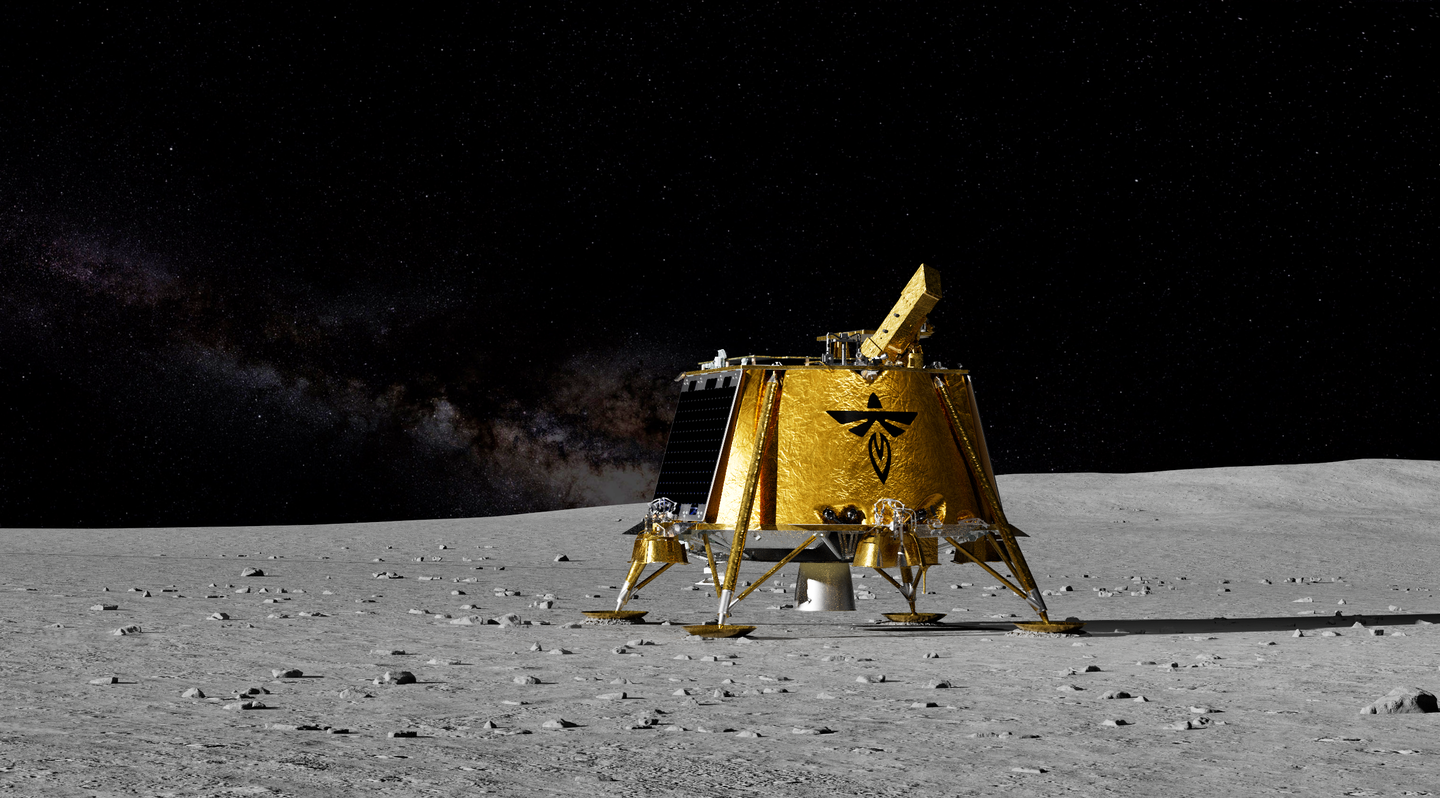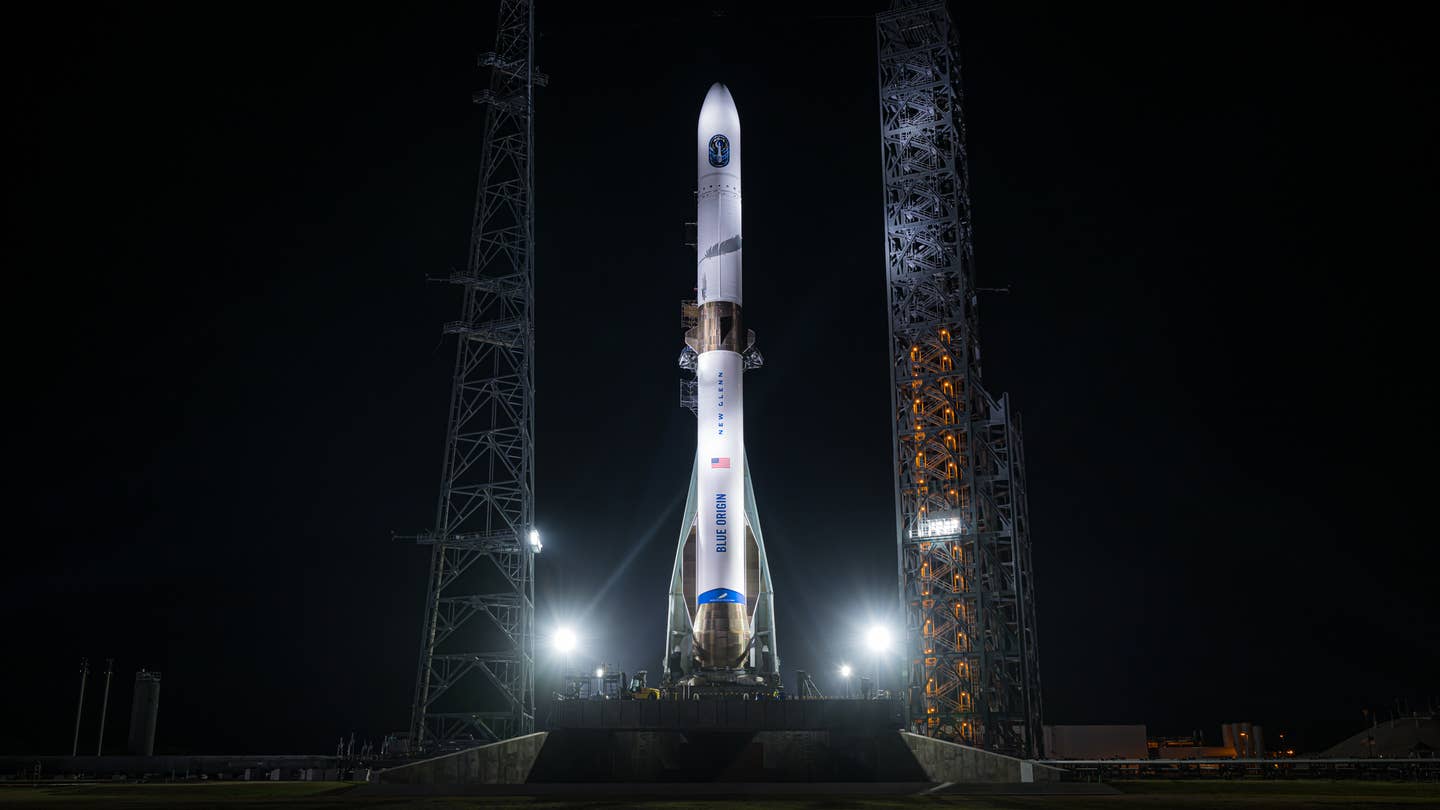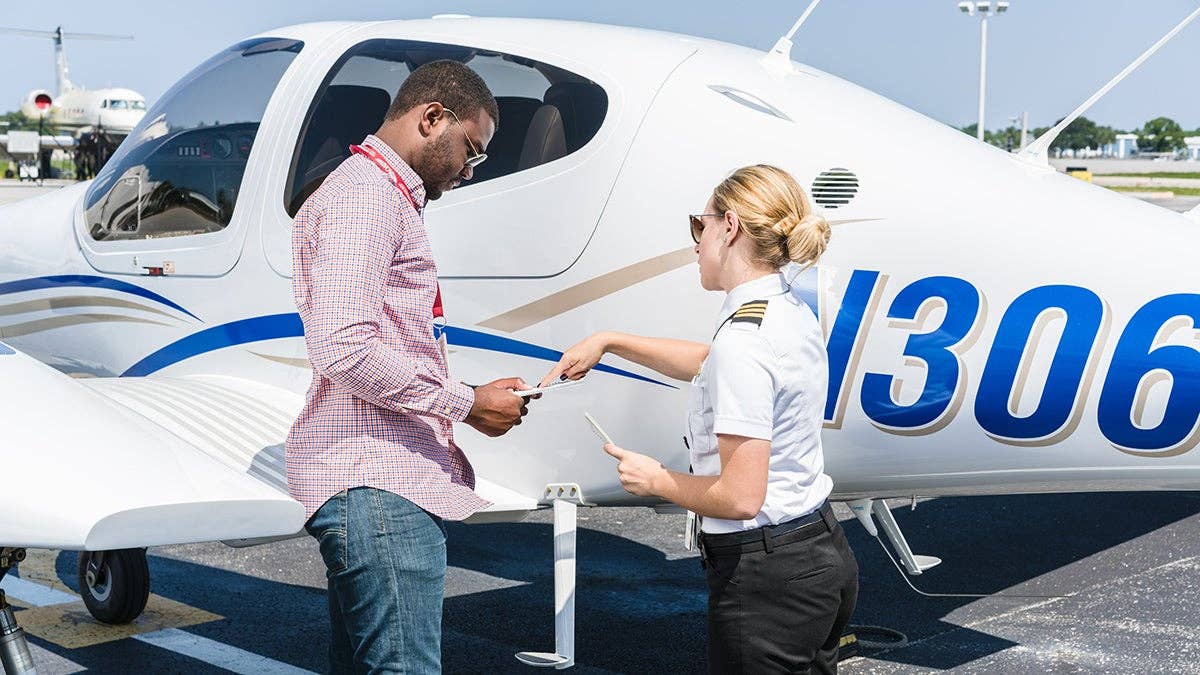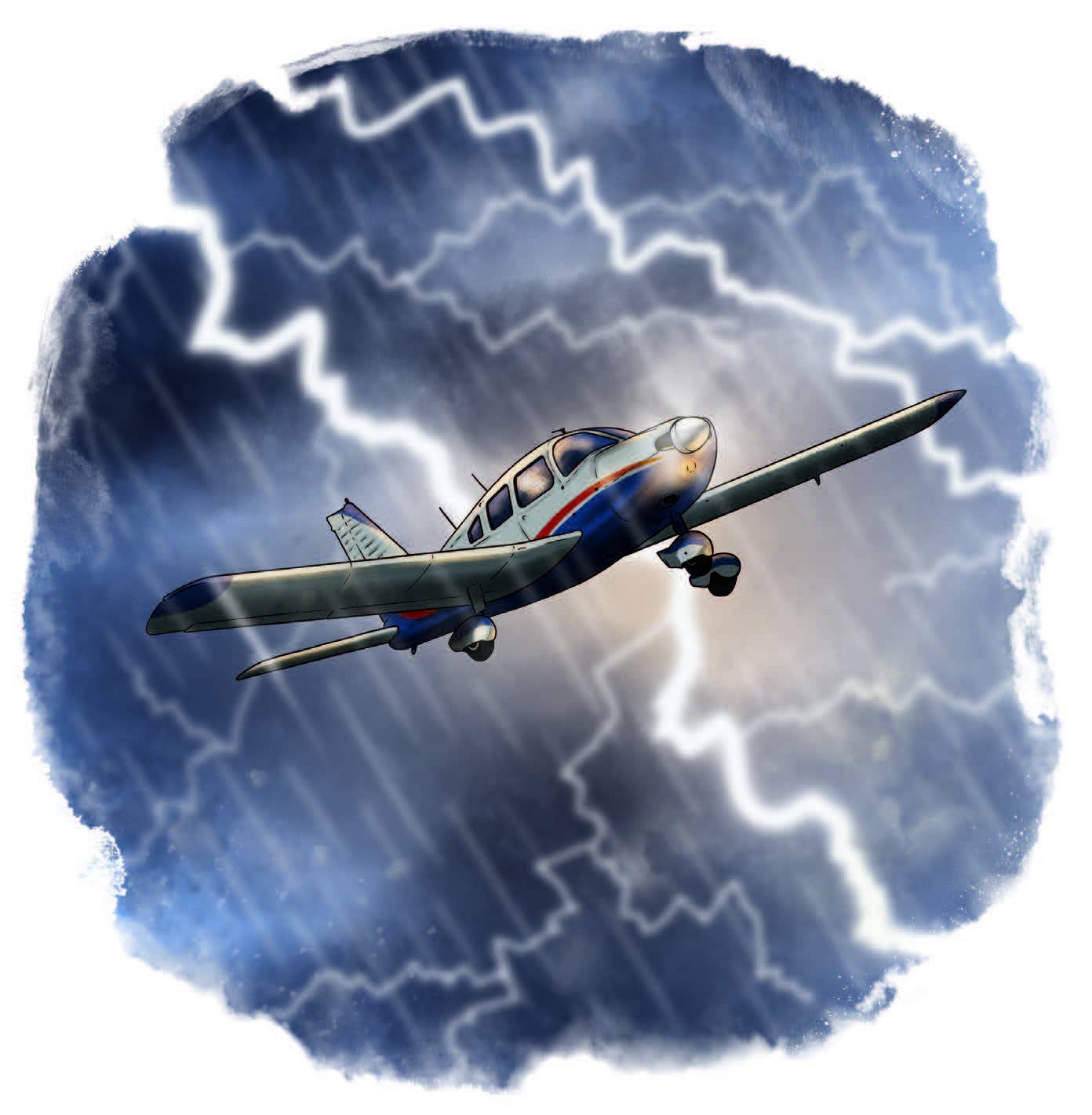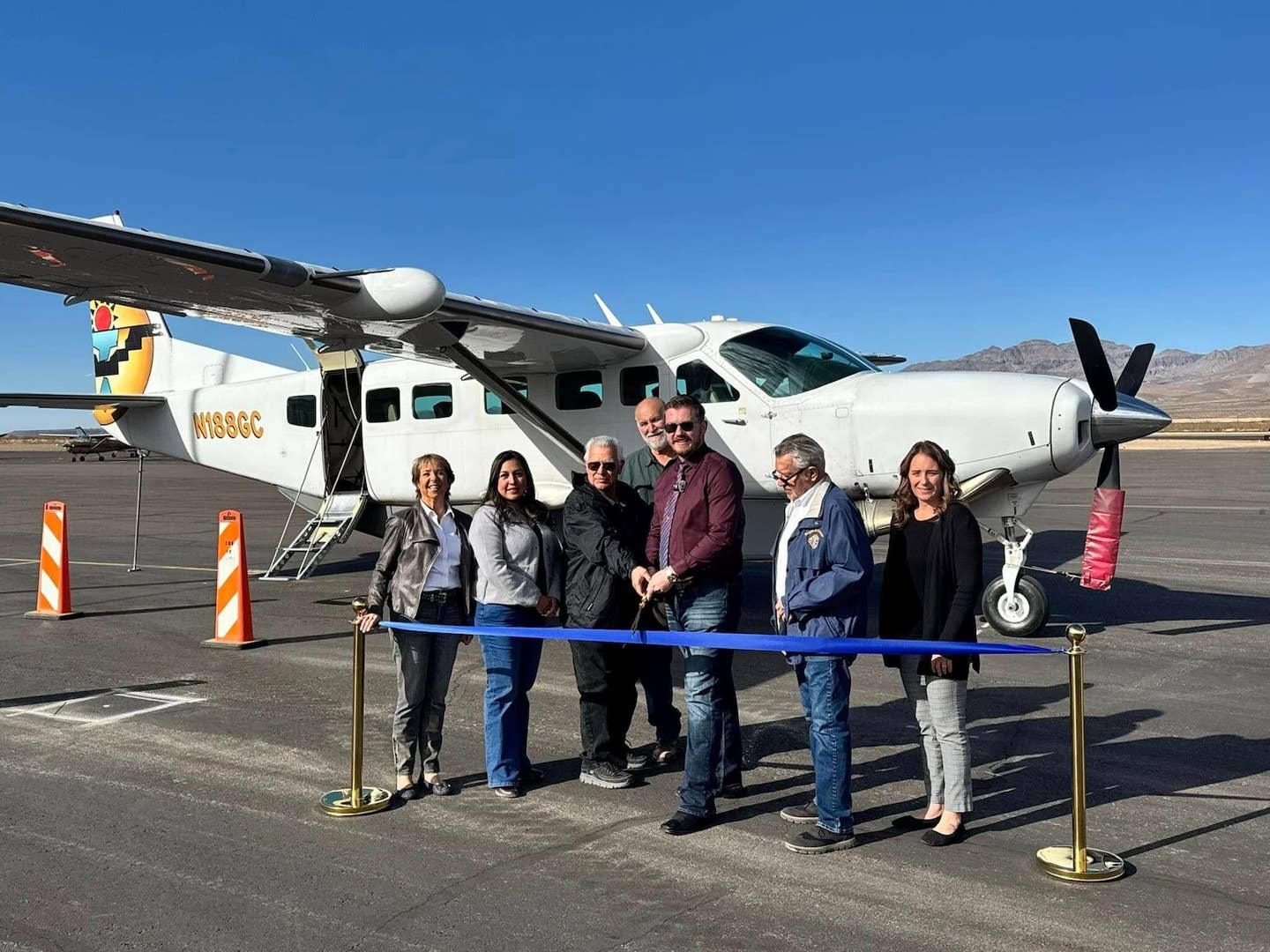
Corporate Angel Network
Corporate aviation has recently received a lot of attention for its intensive efforts flying relief supplies and personnel to ease the devastation in Haiti. John Travolta even filled up his Boeing 707 with supplies and flew it down to help. All of which is terrific. But while colossal disasters and suffering get more attention, many people work to help alleviate suffering on a very private, daily level. The collective impact can sometimes be just as great when each disaster, and each act of kindness, happens on a personal scale.
Although it's such old news that it doesn't even make news anymore, 1.5 million people are diagnosed with cancer each year, and more than a third of that number die from the disease. In addition to the emotional and physical burden a cancer diagnosis imposes, there is a significant financial burden as well.
One study of insured, working women diagnosed with breast cancer found that their out-of-pocket and lost income costs while battling the disease ran from 26 percent to 98 percent of their monthly income. Two recent Harvard studies found that more than half of the bankruptcies in America stem from medical bills, even though more than three-quarters of those with a major illness who declared bankruptcy had insurance at the time of their diagnosis, and that the average out-of-pocket debt of a cancer patient with insurance still tops $35,000.
These burdens are onerous for anyone with cancer, but they are felt more acutely by cancer patients whose illness either proves intractable or is so rare that the only treatment options lie in distant cities.
Sarah Benalcazar, for example, was 8 months old when she was diagnosed with retinal blastoma — a rare cancer of the eye. She went through five rounds of systemic chemotherapy at Children's Memorial Hospital in Chicago, where she and her family live, but the treatments didn't work. The only option left was a kind of intra-arterial chemotherapy that only one doctor, at the Memorial Sloan-Kettering Cancer Center in New York City, offered.
It's wrenching enough to imagine being told that your 8-month-old baby has cancer in both eyes. But Fernando Benalcazar, Sarah's father, was laid off a month after Sarah was diagnosed.
"Sarah was in and out of the hospital for weeks," says Brenda Benalcazar, Sarah's mother, "and we have another child, so it was hard for him to look for a job, and we were really struggling." The news that the only treatment with any hope for Sarah was in New York made the family's situation even tougher. They contemplated driving from Chicago to New York for the treatments. But then they discovered something called Corporate Angel Network.
Corporate Angel Network (CAN) was founded in 1981. It was founded by Leonard Greene, president of the Safe Flight Instrument Corp., whose wife had died of cancer, and two friends who had both battled and survived cancer: Priscilla Blum, a pilot, and Jay Weinberg, a local businessman. Blum and Weinberg came to Greene with an astoundingly simple idea.
"They showed my dad that the average load factor for a corporate aircraft was only 2.7 passengers, which meant a lot of corporate aircraft were flying around with empty seats," says Randy Greene, Leonard's son, who is now chairman of the board of Corporate Angel Network. "And they said, 'What if we could coordinate the travel needs of cancer patients with those available seats?'" Would Greene be willing to help set that up, using his aviation contacts?
Leonard Greene did one step better. He not only enlisted the help of his aviation friends and offered the use of his own corporate King Air 200 — with himself as the pilot — as the first participating company airplane, but he also turned over the entire $100,000 from his own charitable foundation to fund the new organization. Just like that, Corporate Angel Network was born.
Since then, Corporate Angel Network has grown significantly in size. Approximately 500 companies participate, and the network provides flights to an average of 200 cancer patients a month. (CAN patients have to be completely ambulatory and must need no medical care in flight.) But the network can still fulfill only about half of the flight requests it receives from cancer patients in need.
It's easy to have your eyes glaze over at the idea of a million and a half people suffering, regardless of whether it's in a deadly earthquake or after being diagnosed with a deadly disease. It's too many and too overwhelming. But you go to the Corporate Information page of CAN's website (corpangelnetwork.org) and click on the Seats Needed tab, and a list pops up that is strangely personal — strangely, because all it lists are the origins, destinations and dates of flight requests.
On the list, one day in January, request 17940 needed to go from St. Paul, Minnesota, to Phoenix sometime between Jan. 26 and 29. Request 17928 needed to go from Nashville, Tennessee, to Houston sometime between Jan. 29 and 31. Just numbers, dates and cities, but each line represents someone in need, asking for help. And despite all the efforts of the network, only half of them will be helped.
"The metric I instituted a long time ago, in terms of how successful I think we're being, is: When someone calls and asks for a ride, what's the percentage of the time we can do it?" Randy Greene says. "Over the years, we have moved from 10 percent to 50 percent — partly because the network has expanded, but a lot of that is also technology driven."
What Greene means is that, when CAN started, the means for matching corporate flight schedules with patients was by phone, paper and fax. Companies would fax their flight schedules when seats were available, and CAN would try to match that with paper patient requests.
Today, the process is much easier. For one thing, corporate flight departments can just scan the Seats Needed page of CAN's website to see if their flight schedules match any of the dates and locations on the list. Regular participants also e-mail their upcoming flight schedules to CAN volunteers (there are 50 of them in the CAN offices), and the volunteers will then try to match patients' computer requests for flights. Because half the patient requests are still unfilled, patients requesting CAN flights must have back-up transportation arranged.
"It used to be easy to get airline seats that could be switched," Greene says. "Now it's really hard, and that's tough." So far, he says, CAN has not been able to get the airlines to give patients refundable tickets at less than a full coach fare. The patients I talked to, however, were just grateful for the help when they could get it.
Beth Holt, a 44-year-old mother, was diagnosed in December 2008 with a rare form of multiple myeloma, a bone marrow cancer that more typically occurs in African-American men over the age of 60 and is diagnosed in only 10,000 people a year. She was told she needed to have a bone marrow transplant. Holt lives in Florida, but her doctor wanted her to go to M.D. Anderson Cancer Center in Houston for the procedure.
The transplant required a number of visits, and each time Holt had an appointment, she made a reservation on Southwest Airlines, because Southwest allowed her to roll the ticket over to a future flight without a penalty if a CAN flight worked out. As it turned out, CAN was able to fly her to about half of her appointments, which Holt considers a huge gift.
"I'm just very thankful. If it weren't for people giving, it would be so much more of a burden," she says. "It helped make it possible for me to pay my bills. And while I flew with several different crews, they were all so nice." She pauses for a moment, thinking. "And so … warm," she adds. "That was really helpful."
Greene understands. "I think one of the reasons patients love [the CAN flights] so much is just that it's an indication of some stranger caring," he says. "A lot of people say that's a factor in their cure."
Holt was given a transplant of her own harvested bone marrow, which had been cleaned of most of the cancer cells through chemotherapy. Although the illness is now beaten down, it's not gone. She is not cured. She will live with her cancer, waiting and watching to see if or when it flares up again. I ask how she deals with that kind of unending uncertainty.
"I don't look at it like that," she answers. "I don't think I've ever sat down and cried 'poor pitiful me.' When something like that actually happens to you, you just kind of go into survival mode and say, 'OK, that's what the deal is; let's do this. Let's get it taken care of.'" This is, I suppose, more reinforcement of the idea that we cope with uncertainty and adversity far better than we fear we will, when we're actually in the middle of it. Humans are amazing when it comes to prioritizing and focusing for survival. That might be why we've been around as long as we have.
"I say it's been joyful, and people don't understand what I mean," Holt says with a smile. "But amazing things have happened, along the way, to give me what I needed when I needed it. I'm very thankful for that."
Finding a company only 1½ hours from her home that did a lot of business in Houston and flew there regularly, and was willing to take her along, was one of those amazing things — especially, she says, when she came home after her transplant.
Indeed, the reason a corporate flight is such a big deal to cancer patients undergoing treatment isn't just the cost savings. It's also that cancer treatments, from transplants to chemotherapy, tend to ravage a person's immune system. And flying from a private airport FBO on a small plane, point to point, can be a literal lifesaver to a patient whose immune system is weakened.
Lee Loughran's son Jordan, for example, was diagnosed with leukemia when he was 2½ years old. He had his first bone marrow transplant, with his 6-year-old sister as the donor, in Atlanta, where the family lives. But the cancer came back two years later. Lee and her husband began looking for a trial of some kind of treatment that might be more effective. They found one at Sloan-Kettering in New York of a new leukemia-targeted chemotherapy that their son would undergo before another transplant was attempted — this time from an unknown donor.
The social worker at Sloan-Kettering hooked up the Loughrans with CAN, and they've been lucky enough to get flights for all of their trips to New York so far.
"Patients coming out of a transplant are incredibly vulnerable to germs," Loughran explains. "So flying on a commercial aircraft was out of the question for us. We looked at driving, but it's 18 hours to Atlanta, and kids who've had transplants are kind of fragile. So Corporate Angel flights were really a blessing."
Loughran notes that CAN also does more than just schedule the flights. CAN volunteers arrange for transport to and from the airport and make sure all the details and logistics are arranged and communicated well.
"It's kind of like having your mom make the arrangements," Loughran says with a laugh. "Everything is taken care of, down to the last detail."
Several of Jordan's flights were with Coca-Cola Enterprises, based in Atlanta. On one flight, the pilot came back to talk to Jordan with a special message. Bruce Chornock had been a captain for Coca-Cola for 15 years when he noticed a lump in his throat at the beginning of 2008. The lump turned out to be connected with metastatic squamous-cell carcinoma in his throat. He went through surgery and chemotherapy and finally got his FAA medical back on Christmas Eve 2008.
"This past spring, when I heard we had a kid going to New York for a bone marrow transplant on board, I went to talk to him, because I knew what he was going through," Chornock says. "My blood count went down during chemo, and I'd been at risk of infection, so they gave me a shot into my bone marrow to boost it. And it hurt. I felt awful. So I could only imagine how uncomfortable a whole bone marrow transplant would be for a 6-year-old boy.
"So I went back and told him, 'I want to tell you that, a year ago, I went through cancer too.' He wanted to know what kind I had, and he told me what he had. He was amazing, happy-go-lucky. He has matured quickly," Chornock says. "But I told him, 'Hey, I've gone through chemo and radiation, just like you — and I made it, and you're going to make it too. Just like I did.'" Chornock pauses for a moment to gather his voice. "Sorry," he tells me. "I still get choked up about it. But I just told him, 'You're going to be OK. You're going to be fine.'"
A theme from all the patients I talked to was both surprise and appreciation for how warm and caring their Corporate Angel executives and crews were. The amount of interaction isn't always the same — the patients all arrive at the airport an hour ahead of flight time and keep to themselves unless the other passengers want to engage in conversation. If the cancer patient is a child, both parents can travel as well. If the patient is an adult, one travel companion is allowed to fly along.
The CEO of Pepsico, who was taking a single mother and her 6-year-old cancer-stricken child along on a flight to Florida four years ago, arrived at the airport and "went over and just swept the two of them up with her into the Falcon," Greene says. That was CAN's 25,000th flight. Craig Clokey, the director of mission assurance for United Space Alliance, another corporate participant in the network, says when he got on board the first company flight that was carrying a CAN patient, he felt "a lot of pride that our company decided to engage in this."
Greene and Peter Fleiss, CAN's executive director, are constantly looking at how they can increase the number of flight requests CAN is able to fill. "We're talking to cancer centers to see if they could make appointments more flexible, and trying to talk to more corporate flight departments," Greene says.
Some of the trouble is scheduling, and the fact that some patients come from remote areas where few companies fly. In addition, not every executive wants to participate in the program. But Clokey scoffs at the last item. "If there's some kind of mystique to having a stranger or a cancer patient on board, people need to get over it," he says. "These people are just regular folks." And, he notes, "They're always appreciative, and really grounded, when you talk to them. You know they're going through some really tough circumstances, but whatever walk of life they come from, they don't allude to the fact that they're suffering."
On one flight carrying a CAN passenger between Florida and the company's Houston base, Clokey says, "I thought to myself, 'I'm going home. They're going to a lifeline.' And it's just neat that we can do something that makes a difference in their lives."

Sign-up for newsletters & special offers!
Get the latest FLYING stories & special offers delivered directly to your inbox

